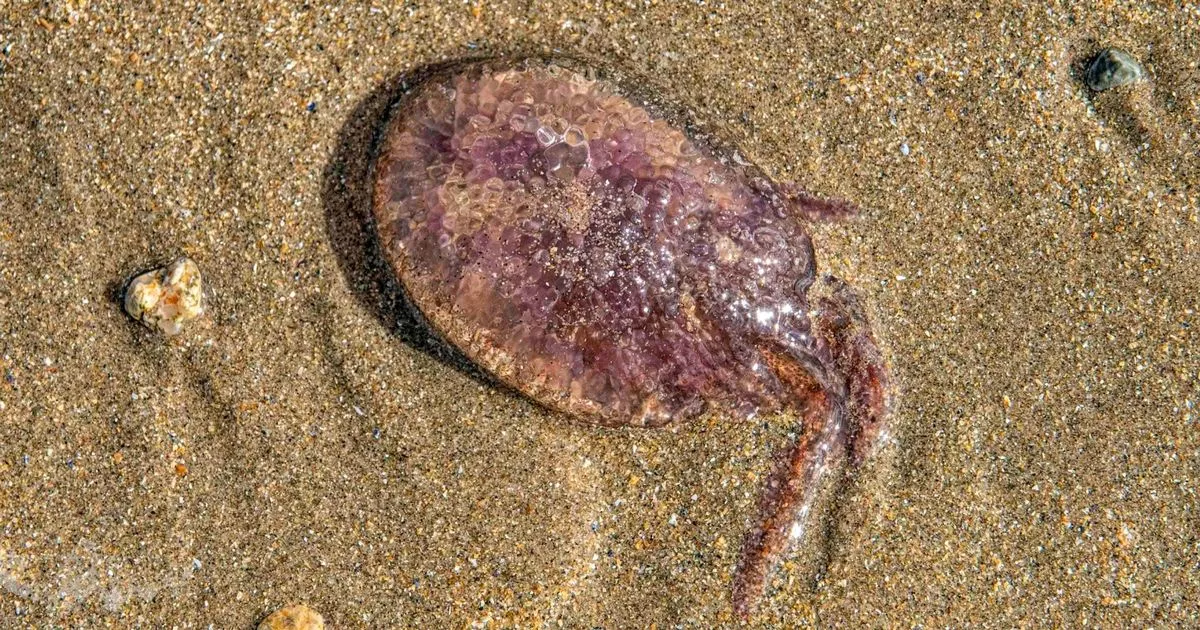By Andrew Forgrave
Copyright dailypost

A “nightclubbing” jellyfish not often seen on UK shores has been washing up in large numbers on North Wales coasts. Though relatively small, wildlife experts say the Mauve stinger “packs a powerful punch” and their presence has been known to close beaches.
Its unexpected arrival comes amid a spate of sightings of another threat on the Gwynedd and Anglesey coasts. Considered dangerous, Coastguards and Cyngor Gwynedd have been quick to issue warnings about Portuguese man o’ war – a marine creature that can cause painful welts.
Last year, Mauve stingers accounted for only 2.6% of all UK jellyfish sightings, according to the Marine Conservation Society. Yet beachgoers reported “lots” in Aberdaron on the Llŷn Peninsula this week, and “hundreds” at Trearddur Bay in northwest Anglesey. Others were seen on Traeth Lligwy, near Moelfre, while hundreds more were spotted “all over the beach” at Traeth Llydan near Rhosneigr.
Despite growing to a maximum 12cm, they have hair-like tentacles up to three metres long covered in stinging cells. Unusually for jellyfish, they also have warts on their bells which also sting.
Contact can be painful and sometimes long-lasting. But despite their nickname – the “purple people eater” – they are not generally dangerous. In the past week, large numbers have also been washing up in Pembrokeshire and plenty of swimmers have been caught out.
One woman was stung in Broad Haven, describing an “intense burn” that eased after a few days to leave faint lines like “faded whip marks”. It then returned with a vengeance: she woke up to find her leg “burning and swollen again like it just happened”. She added: “Will most definitely be getting myself a wetsuit!”
Another woman recalled how her son was recently stung on his wrist and ankle while swimming in Pembrokeshire’s Watwick Bay. “The sting is awful!” she said. “Days later it caused a reaction on other parts of his body causing an infection and he had to have antibiotics.” Sign up now for the latest news on the North Wales Live Whatsapp community
Mauve stingers are commonly seen in the Mediterranean, where swarms have been known to empty beaches of tourists. They can occur in such large numbers, they clog fishing nets and have been known to wipe out entire fish farms.
They also have a neat party tick – they are bioluminescent. Their ability to glow in the dark has led to them being described as marine “disco balls”. Another nickname is the “night-light jellyfish”. They light up when disturbed, shimmering in vibrant colours ranging from mauve and purple, to pink and even yellow.
Posting multi-coloured photos of the pint-sized stingers, the Marine Conservation Society (MCS) said: “Have you ever seen a more beautiful jellyfish? Remember to admire it from a safe distance!”
Like the Portuguese Man o’ war, Mauve stingers ocean drifters and their appearance in the Irish Sea is thought to be linked to this year’s hot weather, which created marine heatwaves off the British coast.
As the two creatures are carried on warmer currents, they usually arrive in early autumn when sea temperatures are at their highest. The presence of so many stingers on the Welsh coast may be linked to recent storms.
Man o’ war are usually more numerous and UK sightings have been increasing in recent years. Last year, reports climbed climbed 16% to make it the second-most commonly seen “jellyfish” (it’s not a true jellyfish), accounting for 19.6% of all sightings.
In North Wales, recent sightings include Criccieth, Harlech, Aberdaron and Shell Island in Gwynedd, and Porth Trecastell between Aberffraw and Rhosneigr on Anglesey.
As their stings can be dangerous, Cyngor Gwynedd has issued multiple Man o’ war warnings. The council wants all sightings reported to its Maritime Office on 01758 704066 or morwrol@gwynedd.llyw.cymru
Criccieth Coastguard Rescue Team is also urging beachgoers and dog walkers to be careful. “Please avoid touching them due to their extremely painful sting – and also be cautious of your pets as well!” said a spokesperson.
“Even when the creature is dead or washed up on the beach, the sting can remain harmful for hours after. Sign up for the North Wales Live newsletter sent twice daily to your inbox
“Stings usually cause severe pain. Red, whip-like marks can appear on the skin that last a few days after the sting. If in doubt or symptoms worsen, please seek medical advice.”
Find out what’s happening near you



